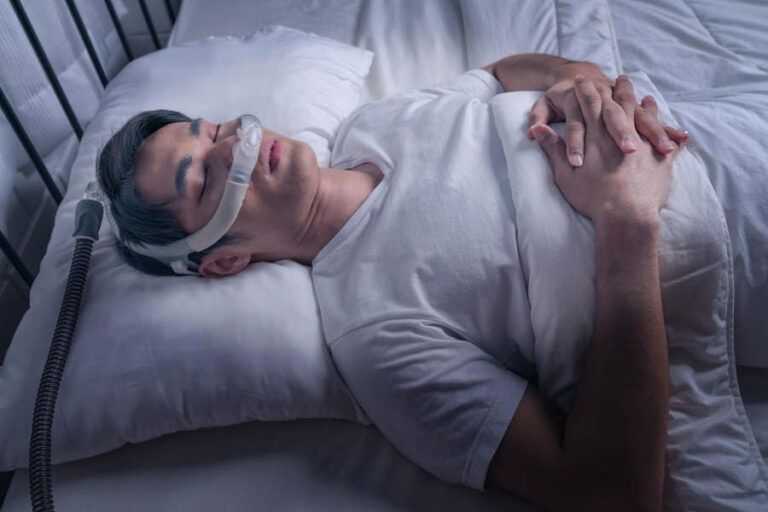Is Modafinil Addictive or Just Habit-Forming? Understanding Dependence Risks
Modafinil, best known by its brand name Provigil, is a prescription medication approved to treat sleep-related conditions such as narcolepsy, obstructive sleep apnea, and shift work sleep disorder. While praised for its wakefulness-promoting effects, Modafinil has gained widespread off-label use as a so-called “smart drug” among students, professionals, and tech workers seeking enhanced focus and cognitive performance. This growing trend raises a crucial question: Is Modafinil truly safe, or can it lead to addiction or psychological dependence over time?
Despite its classification as a low-risk Schedule IV controlled substance, emerging evidence from clinical case reports and neuroscience research suggests that habit-forming behaviors and even dependence may occur in certain individuals, particularly those using it without medical oversight or at high doses. This article examines what current science and medical literature reveal about Modafinil’s addictive potential, the neurochemical mechanisms involved, and the real-world risks documented in both human and animal studies.
Understanding Modafinil
What Is Modafinil Prescribed For?
Modafinil is approved by the FDA for use in:
- Narcolepsy
- Obstructive Sleep Apnea (OSA), as an adjunct to CPAP
- Shift Work Sleep Disorder (SWSD)
Its primary effect is promoting wakefulness, not direct stimulation (U.S. Food and Drug Administration, 2015).
Off-Label Use: Productivity, Focus, and Cognitive Enhancement
Many users, especially students and working professionals, take Modafinil off-label to enhance:
- Focus
- Attention span
- Memory retention
- Work endurance
This trend, however, comes with risks. Off-label use is not supervised, and increased self-dosing can escalate into dependency (Greenblatt & Adams, 2023).
Addiction vs. Dependence: What’s the Difference?
Is Modafinil Addictive?
Modafinil is considered to have a low potential for physical addiction, especially compared to amphetamines. However, its effects on dopamine transmission suggest it may still reinforce compulsive use in vulnerable individuals (Wuo-Silva et al., 2011).
Documented Cases of Modafinil Dependence
- One patient with ADHD escalated to 5,000 mg/day and experienced withdrawal, cravings, and relapse, which met DSM-5 criteria for stimulant use disorder (Alacam et al., 2018).
- Another patient reached 1,200 mg/day over time, reporting anxiety, sleep disruption, and a strong desire to continue use despite negative effects (Krishnan & Chary, 2015).
These cases show that while rare, dependence and tolerance can develop, especially in those with psychiatric vulnerabilities.
How Modafinil Affects the Brain
Modafinil primarily works by:
- Blocking dopamine transporters (DAT) increases dopamine in the striatum and nucleus accumbens, brain regions involved in reward.
- Activating noradrenergic and histaminergic pathways, promoting alertness without full stimulant effects (Greenblatt & Adams, 2023)
Animal studies show cross-sensitization with cocaine, suggesting similar reward reinforcement pathways (Wuo-Silva et al., 2011).
Risks, Side Effects, and Warning Signs
Physical and Psychological Side Effects
According to FDA documentation and clinical literature, side effects can include:
- Headache, nausea, dry mouth
- Anxiety, irritability, nervousness
- Insomnia or disrupted sleep cycles
- Rare psychiatric symptoms: mania, hallucinations, suicidal ideation (U.S. Food and Drug Administration, 2015)
Signs of Modafinil Misuse or Dependence
- Increasing dosage without medical advice
- Taking it to manage stress, fatigue, or mood
- Feeling irritable or fatigued when not using it
- Sleep disturbance or vivid dreams during withdrawal (Alacam et al., 2018)
Modafinil Use in Adolescents and At-Risk Populations
Modafinil is not approved for children or adolescents outside of specific cases such as narcolepsy. Use in this group, especially off-label, raises serious concerns:
- Higher likelihood of side effects
- Increased impulsivity or misuse in ADHD patients
- Long-term impacts on brain development
Legal Status and Access
- In the United States, Modafinil is a Schedule IV controlled substance, meaning it has recognized medical use but potential for abuse (U.S. Food and Drug Administration, 2015).
- In other countries, such as India or Turkey, Modafinil has been available over-the-counter, contributing to cases of misuse (Krishnan & Chary, 2015; Alacam et al., 2018).
- Unregulated online sales may involve counterfeit or contaminated versions, adding health risks.
Treatment and Recovery Options
There is no standardized treatment for Modafinil dependence, but clinical approaches include:
- Gradual tapering (e.g. 100 mg every 2–3 days)
- Substitute medications like bupropion for dopamine regulation (Krishnan & Chary, 2015)
- Supportive psychiatric care to manage withdrawal, anxiety, and cravings
Final Thoughts: Safe Use Requires Caution
Although Modafinil is not considered highly addictive in the usual sense, clinical evidence and known biological mechanisms indicate that habit formation and psychological dependence can still occur, particularly with off-label or unsupervised use.
If you’re considering Modafinil for productivity, consult a qualified medical provider. Responsible use, legal compliance, and awareness of long-term effects are essential.
References
- Alacam, H., Basay, O., Tumkaya, S., Mart, M., & Kar, G. (2018). Modafinil Dependence: A Case with Attention-Deficit/Hyperactivity Disorder. Psychiatry Investigation, 15(4), 424–427. https://doi.org/10.30773/pi.2016.10.25
- Greenblatt, K., & Adams, N. (2023). Modafinil. In StatPearls. StatPearls Publishing. https://www.ncbi.nlm.nih.gov/books/NBK531476/
- Krishnan, R., & Chary, K. V. (2015). A rare case modafinil dependence. Journal of Pharmacology and Pharmacotherapeutics, 6(1), 49–50. https://doi.org/10.4103/0976-500X.149149
- U.S. Food and Drug Administration. (2015). PROVIGIL® (modafinil) tablets, for oral use, C-IV [Prescribing information]. https://www.accessdata.fda.gov/drugsatfda_docs/label/2015/020717s037s038lbl.pdf
- Wuo-Silva, R., et al. (2011). Addictive potential of modafinil and cross-sensitization with cocaine: a pre-clinical study. Addiction Biology, 16(4), 565–579. https://doi.org/10.1111/j.1369-1600.2011.00341.x








